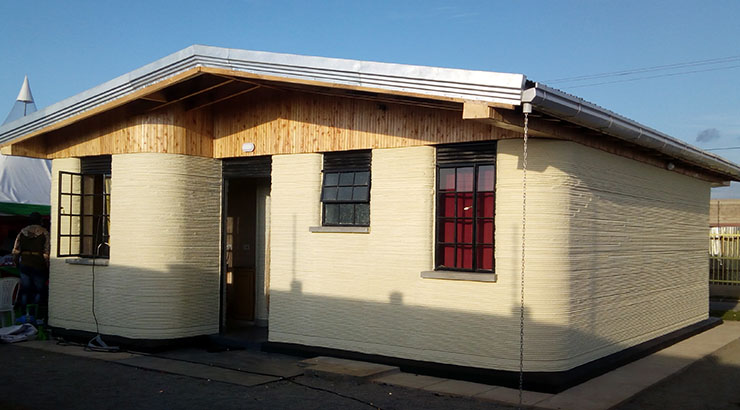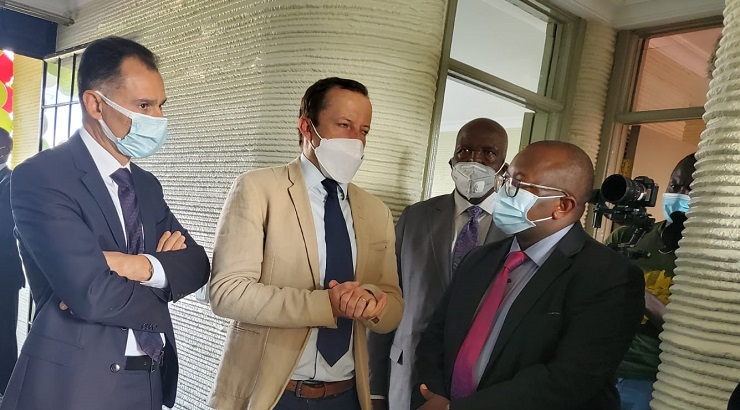Residential Projects
Kenya’s First 3D-Printed House Opens in Athi River
3D printing technology has been hailed as revolutionary.

Trees House No. 0, the first 3D-printed house in Kenya, has officially opened its doors in Athi River, Machakos County – marking the successful deployment of 3D printing technology into the Kenyan construction market.
The two-bedroom house located within Bamburi Special Products premises, is the product of a partnership between Bamburi Cement’s parent firm Holcim and UK development financier CDC Group through their joint venture, 14 Trees.
It will serve as the show house for the proposed Mvule Gardens – Africa’s largest 3D-printed affordable housing project near Kilifi town.
Trees House No. 0 has achieved EDGE Advanced Certification, which exemplifies achievement in 45% energy savings, 23% water savings, and 71% less embodied energy in materials.
Speaking during the ribbon-cutting ceremony on Monday, Charles Hinga, the PS in the State Department for Housing and Urban Development, praised the project, saying it will potentially fast-track the delivery of affordable houses in Kenya.
“In line with the Affordable Housing Programme, and given the effects of climate change being experienced the world over, this project is indeed timely and opportune having achieved EDGE Advanced Certification.” Mr Hinga said.
“I also note that the cost of construction per square metre is reasonable, between Sh30,000 to Sh31,000 per sqm, thus lowering the sale price per square metre”.

Colm Halley, General Manager of 14 Trees Kenya expressed his excitement over the success of the venture, saying 3D printing of structures is likely to accelerate affordable and sustainable building in the country.
“The announcement of Mvule Gardens and the inauguration of the show house in Nairobi are an exciting step to deliver beautiful affordable, eco-friendly homes in Kenya,” he said.
RELATED: World’s Finest 3D Printed Homes
3D-printing of houses is done using a giant 3D printer that ejects ink (a special concrete) using a nozzle, which makes it possible for a wall to be completed in just 12 hours compared to four days with conventional building techniques.
Reduce carbon footprint
The technology has been hailed as revolutionary due to its speed and optimised usage of construction materials, as well as its ability to reduce the carbon footprint of new homes by half.
The technology achieves shorter build times by doing away with and consolidating more than 20 manual labour-intensive processes, including siding, framing, and sheathing.
3D printing of houses saves 30% of the waste that conventional projects produce since components are printed on-demand and any leftovers can easily be recycled for future use.
RELATED: US Firm Delivers the World’s Largest 3D-Printed House
Another benefit of this technology is that it produces structures that are mold and fire-resistant and built to withstand severe weather more than structures completed using traditional construction methods.
Skilled job creation
Holcim believes that 3D printing technology can sustain skilled job creation with the hiring and training of local experts from 3D machine operators to material specialists collaborating with specialists in carpentry, painting and roofing.
To boost the uptake of the new technology, the Kenyan government is expected to design standards that will be followed by 3D printers of buildings as far as structural integrity, plumbing, electrical, and public safety issues are concerned.
RELATED: 3D Printing Technology for Construction
The arena of 3D printing of houses is already expanding globally as more companies invest millions of dollars into the development of 3D printing technologies.
Dubai is for example positioning itself as a hub for 3D printing of buildings in line with its Vision 2025 where at least 25% of all new buildings in the city will be 3D printed.














